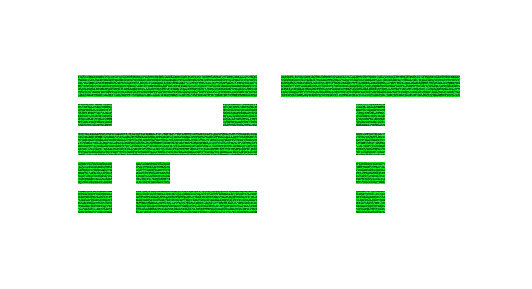In the rugged landscape of West Texas, where businesses from oil rigs to family-run stores rely on dependable technology to weather economic fluctuations and environmental challenges, the end of support for Windows 10 marks a pivotal moment. As of October 14, 2025, Microsoft has officially ceased providing free security updates, feature enhancements, and technical assistance for this widely used operating system. This transition isn’t just a tech headline—it’s a practical concern that could impact your bottom line, data security, and operational efficiency. In this in-depth exploration, tailored for business owners and decision-makers in regions like Midland, Odessa, or Lubbock, we’ll break down what end of life (EOL) truly entails, the hardware hurdles preventing seamless upgrades, and the multifaceted risks of persisting with unsupported software. We’ll draw on official sources, expert analyses, and real-world implications to equip you with the knowledge to make informed decisions.
Defining Windows 10 End of Life: Beyond the Basics
Windows 10’s EOL means Microsoft has retired the OS from its standard lifecycle support. Launched in 2015, it powered millions of devices globally, including countless business setups in West Texas where affordability and longevity are key. Post-October 14, 2025, no more automatic updates will arrive via Windows Update for security patches, bug fixes, or compatibility improvements. This leaves your systems frozen in time—functional, but increasingly isolated in a digital world that’s constantly evolving.
For businesses, this shift has broader implications. Without updates, software that integrates with Windows 10, such as Microsoft Office or industry-specific tools for energy management, may eventually face compatibility issues. Moreover, regulatory bodies in sectors like healthcare (HIPAA) or finance (PCI DSS) often require up-to-date systems for compliance. In West Texas, where many enterprises deal with sensitive data—think oil lease records or agricultural supply chains—failing to address EOL could invite audits or penalties.
However, Microsoft offers a lifeline through the Extended Security Updates (ESU) program. For commercial users, this provides critical security patches (but not new features) for up to three years, starting November 2025. Pricing begins at $61 per device for the first year, doubling annually ($122 for year two, $244 for year three). This cumulative model means you must pay for prior years if enrolling later, making early action cost-effective. Eligibility requires devices on Windows 10 version 22H2, and purchases go through Microsoft’s Volume Licensing Program. While not a long-term fix, ESU can serve as a bridge for businesses planning phased upgrades, especially in resource-strapped environments like West Texas small operations.
Hardware Roadblocks: Why Upgrading Isn’t Always Simple
One of the biggest frustrations for West Texas business owners is discovering that not all machines can leap to Windows 11. Microsoft’s stricter hardware requirements, introduced to enhance security and performance, exclude many older systems still chugging along in offices, field trailers, or home-based setups.
Here’s a breakdown of the key Windows 11 requirements, based on official Microsoft guidelines:
| Requirement | Minimum Specification | Common Issue for Older Machines |
|---|---|---|
| Processor | 1 GHz or faster with 2 or more cores on a compatible 64-bit processor (e.g., 8th-gen Intel Core or AMD Ryzen 2000 series and later) | Pre-2018 CPUs lack compatibility; many West Texas businesses use 6th/7th-gen Intel chips from budget purchases. |
| RAM | 4 GB | Most older systems meet this, but paired with incompatible CPUs, it’s insufficient. |
| Storage | 64 GB or larger | Easily met, but not the primary barrier. |
| Firmware | UEFI with Secure Boot capable | Legacy BIOS modes on pre-2015 hardware don’t support this. |
| TPM | Version 2.0 | Absent in many machines before 2016; enabling it in BIOS isn’t always possible or sufficient. |
| Graphics | DirectX 12 compatible with WDDM 2.0 driver | Older integrated graphics fail here, affecting laptops common in mobile West Texas work. |
| Display | High-definition (720p) with >9″ diagonal and 8 bits per color channel | Rarely an issue for business devices. |
| Internet | Required for setup and updates | Assumes connectivity, which can be spotty in rural West Texas areas. |
These specs ensure better security features like virtualization-based security, but they sideline an estimated 240 million devices worldwide that can’t upgrade without hardware tweaks or replacements. For instance, enabling TPM 2.0 might work on some 7th-gen Intel systems via BIOS updates, but Microsoft doesn’t officially support it, leading to potential instability. In West Texas, where upgrading an entire fleet could strain budgets already hit by energy market volatility, this creates a dilemma: invest in new hardware (averaging $500–$1,000 per device) or opt for ESU as a stopgap.
Workarounds exist, such as third-party tools to bypass requirements during installation, but these void warranties, increase risks, and aren’t recommended for business environments due to potential legal and security pitfalls. Instead, use Microsoft’s PC Health Check tool to assess your devices—it’s free and provides clear feedback on compatibility issues.
The Risks of Continuing with Unsupported Windows 10: A Business Perspective
Persisting with Windows 10 post-EOL isn’t inherently catastrophic on day one, but risks compound over time, much like deferred maintenance on a West Texas oil pump. Cybersecurity experts, including those from firms like Morphisec and TechRadar, emphasize that without patches, known vulnerabilities become easy targets for hackers. Ransomware, which encrypts data and demands payment, is a prime threat—attacks on unsupported systems reportedly surge by 20–30% in the first year post-EOL, based on historical data from Windows 7’s retirement.
For West Texas businesses, consider these layered risks:
- Security Vulnerabilities: Unpatched flaws invite malware, phishing, and zero-day exploits. A single breach could expose customer data, leading to reputational damage in tight-knit communities.
- Compliance and Legal Exposure: Industries under regulations (e.g., energy firms with CMMC requirements) risk non-compliance fines. HIPAA-covered healthcare providers in areas like Abilene could face penalties up to $50,000 per violation if systems are deemed insecure.
- Operational Downtime and Costs: Infections might halt operations, costing hours or days. Recovery expenses average $1.8 million per incident for small businesses, per IBM reports—devastating for West Texas outfits without deep reserves.
- Software Incompatibility: New apps or cloud services may drop Windows 10 support, forcing workarounds that reduce efficiency. For example, Microsoft 365 features could degrade, impacting productivity tools essential for remote teams.
- Insurance Implications: Cyber insurance providers increasingly require updated OS for coverage; unsupported systems might lead to denied claims post-breach.
While some anecdotal reports (e.g., on Reddit) suggest low immediate risks for non-critical use, professional consensus leans toward proactive measures. ESU mitigates some threats by delivering critical patches, but it’s not foolproof—non-security issues remain unaddressed. In controversial debates, critics argue Microsoft’s requirements artificially force hardware sales, but supporters highlight improved defenses against evolving threats like AI-driven attacks.
To counterbalance, alternatives include switching to Linux distributions (free, but with a learning curve) or cloud-based solutions like Windows 365, which entitle connected Windows 10 devices to ESU at no extra cost with an active subscription. For West Texas leaders, weighing these against your risk tolerance—perhaps lower for a solo accountant than a multi-site operation—is key.
Strategic Recommendations for West Texas Businesses
Start with an audit: List all devices, check compatibility, and estimate ESU vs. upgrade costs using tools like Microsoft’s assessment resources. Budget for training if upgrading, as Windows 11’s interface differs slightly. Engage local MSPs (managed service providers) for tailored advice—firms familiar with West Texas challenges can handle migrations remotely, minimizing travel costs.
In summary, Windows 10’s EOL is a call to action, not panic. By understanding the mechanics, barriers, and risks, you can safeguard your business’s future in an increasingly digital West Texas economy.

